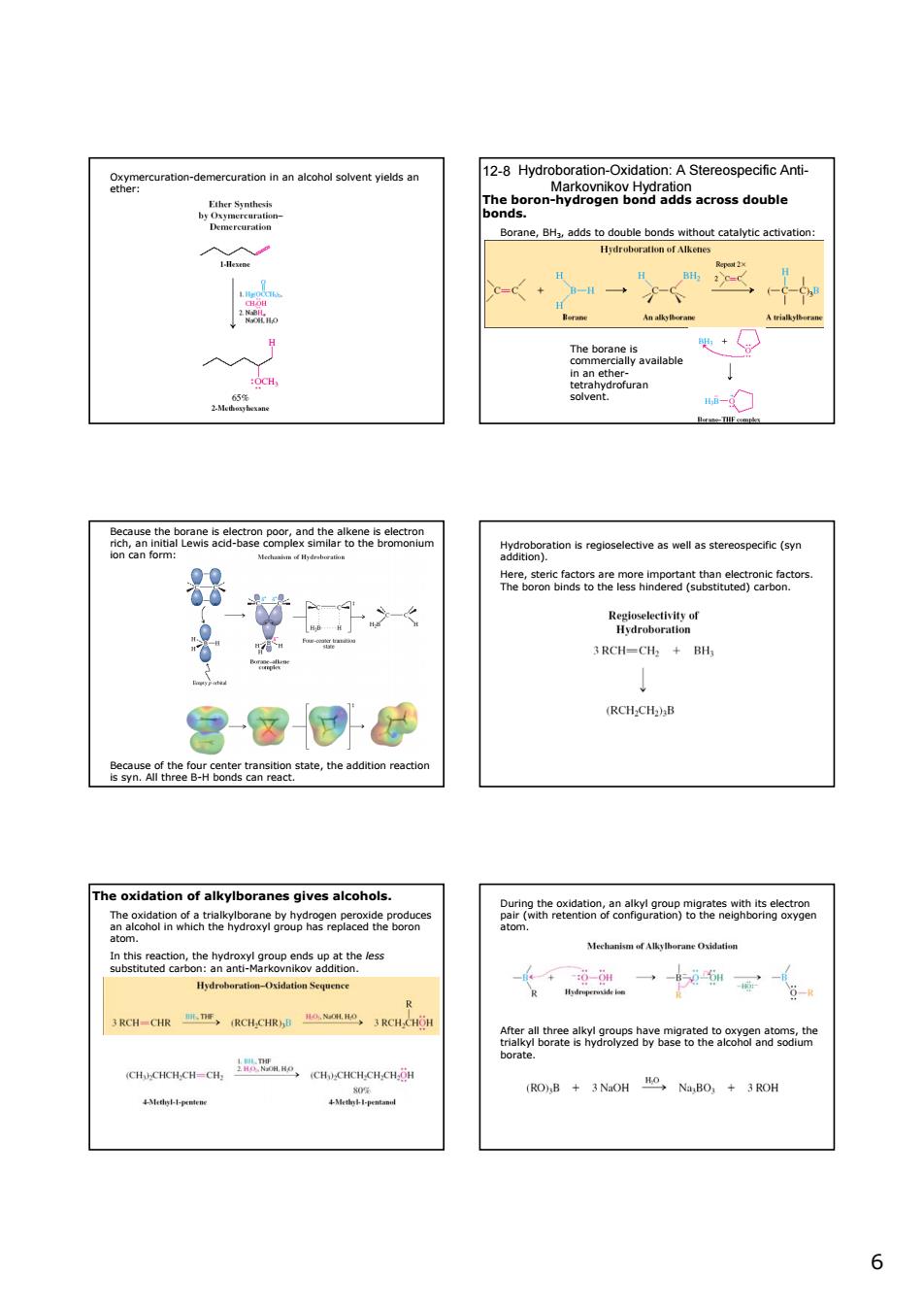正在加载图片...

r-dem in an alcohol solvent yields an 1-8 Hydroboration-Oxidation:A Stereospecific Anti- EBeteronh9iogo9gahg58aeacosdoubie Boane,Bh.3dstodoubebontwthotcaayticacaton ha- egoectvesellr(y 器 eeomhcgaoeehc2othenbea6octr amhahna 3RCH=C+ 8-8@乎 (RCH.CH:)B sae6e3o0eoto oxidation of alkylboranes gives alcohols. haman866gsge8r Raa2n5a n8neesngaAgreRhee 酒一校军《 3a-GR票q,e 的88 00-G00 (RD,+3NOH Na,BO,+3ROH 4Mdob-i-pemtese :g-pen 6 6 Oxymercuration-demercuration in an alcohol solvent yields an ether: Hydroboration-Oxidation: A Stereospecific AntiMarkovnikov Hydration 12-8 The boron-hydrogen bond adds across double bonds. Borane, BH3, adds to double bonds without catalytic activation: The borane is commercially available in an ethertetrahydrofuran solvent. Because the borane is electron poor, and the alkene is electron rich, an initial Lewis acid-base complex similar to the bromonium ion can form: Because of the four center transition state, the addition reaction is syn. All three B-H bonds can react. Hydroboration is regioselective as well as stereospecific (syn addition). Here, steric factors are more important than electronic factors. The boron binds to the less hindered (substituted) carbon. The oxidation of alkylboranes gives alcohols. The oxidation of a trialkylborane by hydrogen peroxide produces an alcohol in which the hydroxyl group has replaced the boron atom. In this reaction, the hydroxyl group ends up at the less substituted carbon: an anti-Markovnikov addition. During the oxidation, an alkyl group migrates with its electron pair (with retention of configuration) to the neighboring oxygen atom. After all three alkyl groups have migrated to oxygen atoms, the trialkyl borate is hydrolyzed by base to the alcohol and sodium borate